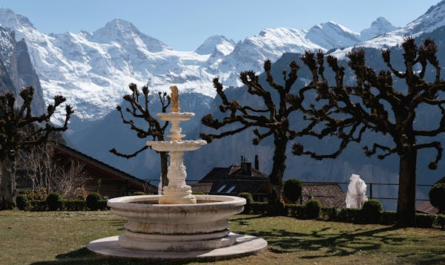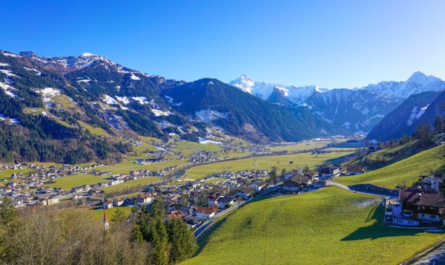Located in the heart of Tyrol, Austria, the charming village of Alpbach is renowned for its breathtaking alpine scenery, traditional wooden houses, and vibrant cultural scene. While visitors often come for the picturesque views and the tranquility of the Austrian Alps, Alpbach also offers a rich history, which is wonderfully preserved in its museums. These museums are home to a range of fascinating artifacts, many of which offer a glimpse into the region’s unique history, culture, and heritage.
Alpbach is a place where the past and present seamlessly blend, offering an unforgettable cultural experience for anyone interested in history, art, and tradition. In this article, we’ll explore 10 fascinating artifacts that you’ll find in Alpbach’s museums, each telling a compelling story of the region’s past.
1. Traditional Tyrolean Costumes
One of the most enduring elements of Alpbach’s heritage is its traditional Tyrolean clothing. These costumes, known as “Ländlermode,” are a symbol of the village’s deep-rooted alpine culture. In the local museum, visitors can view beautifully crafted examples of these garments, which are worn during festivals, celebrations, and weddings.
The Tyrolean costumes are typically made from high-quality wool, leather, and intricate embroidery. The women’s costumes often feature brightly colored skirts, aprons, and ornate lace blouses, while the men’s costumes include lederhosen (leather shorts), tailored jackets, and feathered hats. These garments are not only a visual treat but also a reflection of the region’s agricultural and artisanal traditions.
2. Ancient Alpine Tools
The Alpbach Museum houses a fascinating collection of ancient tools that were used by the local mountain communities for centuries. From hand-forged farming implements to early woodworking tools, these artifacts provide an insight into the day-to-day life of the region’s early inhabitants.
Many of these tools were used in agriculture, which was the backbone of life in the alpine region. Items like scythes, sickles, and wooden plows showcase the ingenuity of the villagers who had to adapt to the harsh mountainous environment. These artifacts are a testament to the resourcefulness and craftsmanship of the Tyrolean people.
3. Historical Alpine Maps
The museum also boasts a collection of rare historical maps, some dating back to the 17th century. These maps are not only valuable historical documents but also works of art in their own right. They provide a glimpse into how the region was viewed by early explorers and cartographers and reveal the gradual development of Alpbach and the surrounding areas over time.
The historical maps also illustrate the evolution of Alpbach’s infrastructure, including roads, mountain paths, and settlements. Viewing these maps allows visitors to trace the growth of the village from a small, isolated mountain community to the vibrant village it is today.
4. Wooden Sculptures from Alpbach’s Past
Alpbach’s artisans have long been known for their woodworking skills, and the museum displays some stunning examples of wooden sculptures and carvings. These sculptures often depict religious figures, animals, and scenes from everyday life. The intricacy and detail of the carvings are a testament to the exceptional craftsmanship of local woodworkers, who have passed their skills down through generations.
Some of the most remarkable sculptures in the museum are from the 18th and 19th centuries, offering a glimpse into the spiritual and cultural beliefs of the time. These works not only showcase artistic skill but also offer insight into the role of religion and folk traditions in Alpbach’s history.
5. Medieval Relics
Alpbach’s history stretches back over a thousand years, and the village’s museums are home to a number of fascinating medieval relics. Among these are ancient church bells, tools, and even remnants of old buildings. One of the most notable pieces is a medieval stone tablet inscribed with a Latin inscription, believed to date back to the 12th century.
These relics offer a window into the medieval period, a time when Alpbach was just beginning to establish itself as a village in the rugged Tyrolean Alps. The artifacts showcase the region’s early architecture, religious practices, and social structures.
6. Exquisite Local Pottery
Pottery has been an important craft in Alpbach for centuries, and the village museum proudly displays a collection of local ceramics. These pieces include everything from simple everyday items, such as jugs and bowls, to intricately decorated pieces that were used in religious ceremonies and as decorative items.
The pottery in Alpbach is characterized by its earthy tones and simple yet elegant designs, which reflect the region’s deep connection to nature. Many of these pieces were handcrafted by local artisans, and some feature traditional Tyrolean motifs, such as flowers, animals, and mountains. The pottery collection provides a fascinating insight into the artistic traditions of Alpbach.
7. Historical Religious Artifacts
Religion has always played a central role in the culture of Alpbach, and the region’s museums contain a wide variety of religious artifacts. One of the most impressive items in the collection is an elaborate altar piece, dating back to the 16th century, which is adorned with intricately painted panels depicting scenes from the Bible.
Other religious artifacts include candles, chalices, and relics from local churches, many of which are beautifully crafted and often feature stunning religious iconography. These artifacts offer a glimpse into the spiritual life of the community and demonstrate the importance of faith in Alpbach’s historical development.
8. Traditional Alpine Music Instruments
Music has always been an important part of Tyrolean culture, and Alpbach’s museums feature a number of traditional alpine musical instruments. These include instruments such as the “Zither” (a stringed instrument), the “Schuhplattler” (a traditional wooden clapping device), and various types of horns and flutes.
The music of the Alps is often accompanied by dance, and the museum also showcases traditional dance costumes and recordings of the region’s folk music. Visitors can learn about the history of alpine music and its role in community gatherings, festivals, and celebrations.
9. Historical Farming Artifacts
Agriculture was the backbone of life in Alpbach for centuries, and the museum has a wealth of historical farming artifacts on display. From plows and hoes to grain mills and water wheels, these items show how local farmers adapted to the difficult mountain terrain in order to cultivate the land.
One of the most fascinating farming artifacts is an early version of the alpine hay dryer, which was used to dry hay during the short summer months. These tools and devices were essential to survival in the region, and they reflect the ingenuity and resilience of the alpine farmers.
10. Alpbach’s 19th-Century Photographs
Finally, the museum’s collection of 19th-century photographs offers a rare glimpse into Alpbach during the early days of photography. These black-and-white images capture everyday life in the village, as well as the natural beauty of the surrounding mountains.
The photographs document the transformation of Alpbach from a remote alpine village to a vibrant tourist destination, showing the changes in architecture, agriculture, and daily life over the decades. The photos are not only valuable historical documents but also stunning examples of early photography.
Alpbach’s museums are a treasure trove of historical and cultural artifacts, each one telling the story of this charming alpine village and its people. From traditional Tyrolean costumes and medieval relics to exquisite pottery and early photographs, these artifacts offer a fascinating window into the past. A visit to Alpbach’s museums is not only an opportunity to appreciate the region’s rich cultural heritage but also a chance to connect with the people and traditions that have shaped this unique alpine community.
Whether you’re a history enthusiast, an art lover, or simply someone who appreciates the beauty of the Alps, Alpbach’s museums are sure to offer something that will captivate and inspire. So, next time you find yourself in this picturesque village, be sure to take the time to explore its fascinating museums and discover the rich history that lies within.



